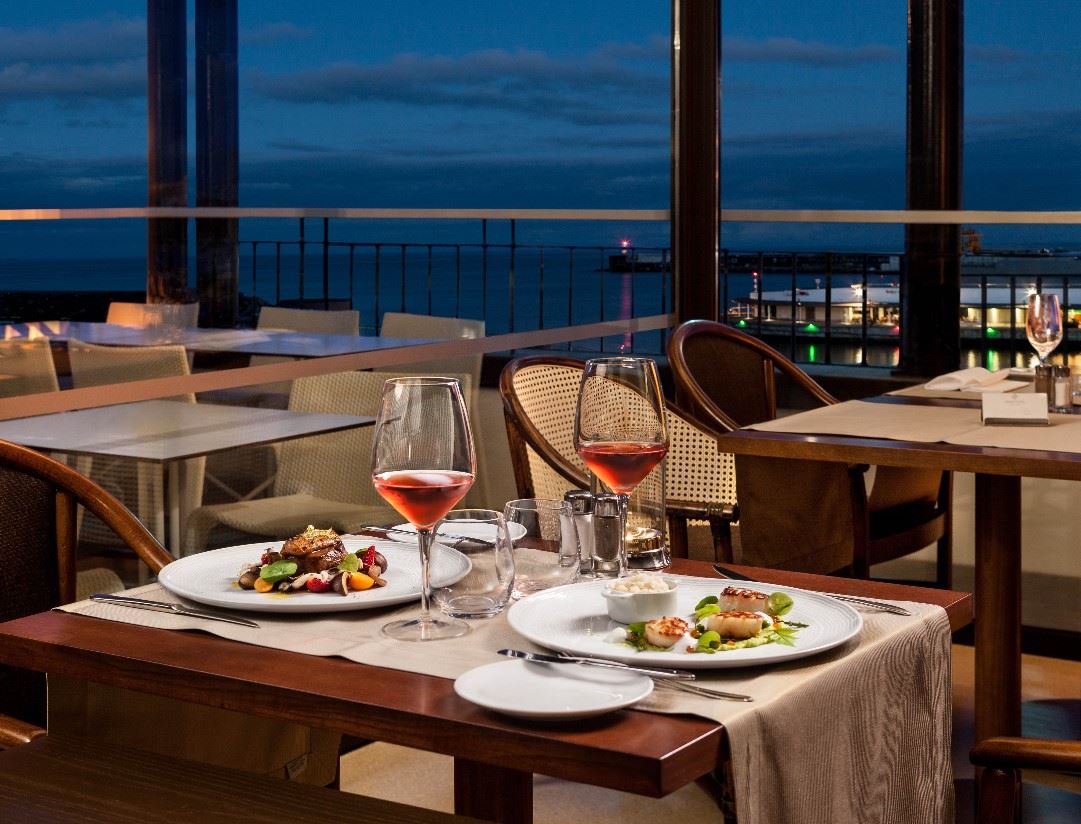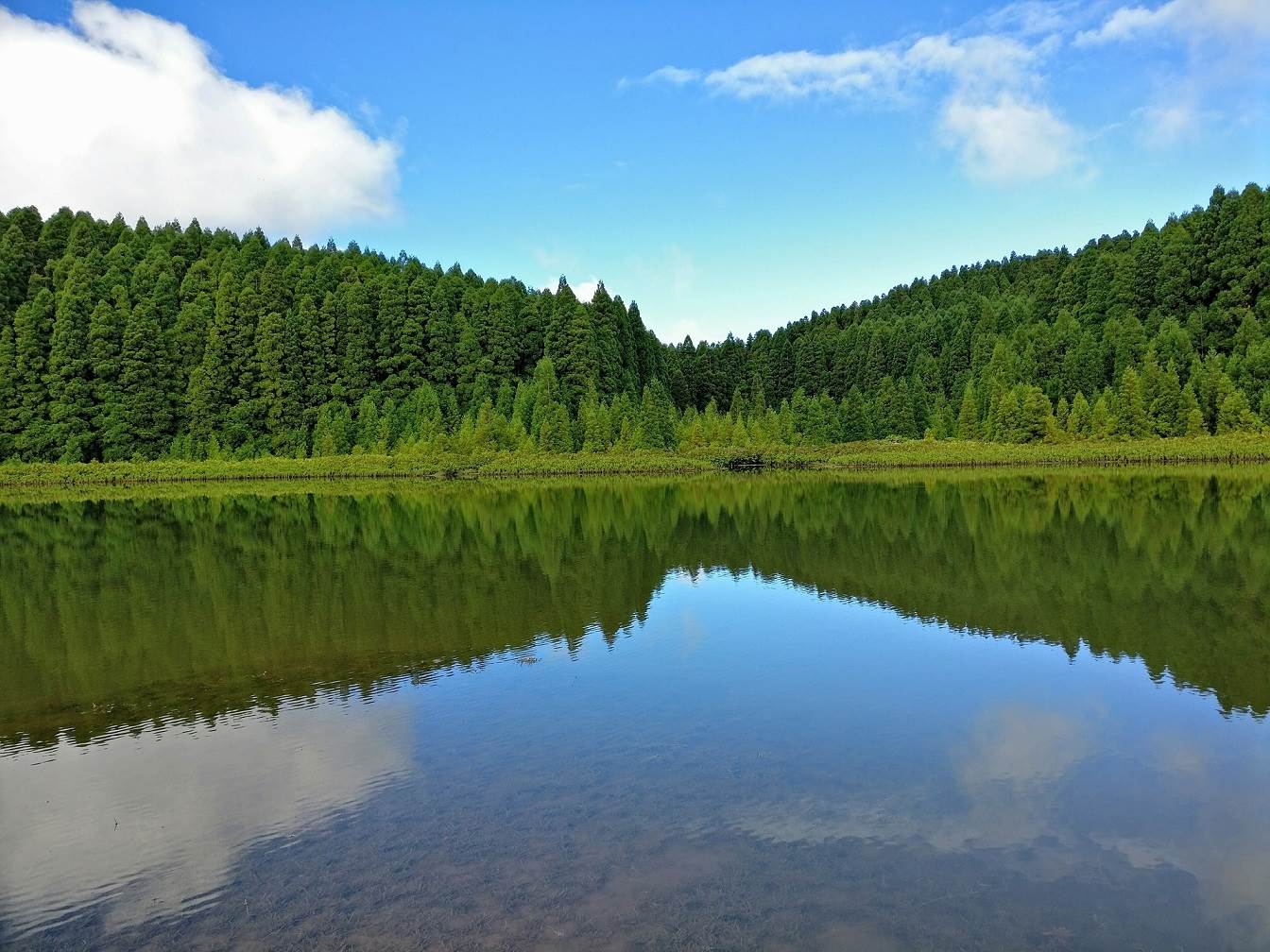September 24 ~ September 30, 2019

Today we traveled nearly 5,000 miles. A mere 14 hours and 7 time zones later, we landed on the tropical paradise of the Azores' largest island, Sao Miguel.
Our destination today is Ponta Delgada, the largest city in Sao Miguel. Ponta Delgada is also the capital city of the Azores.
 Ponta Delgada has a population of about 65,000. Every spring and summer and even once or twice in September, the cruise lines dock their 4,000 passenger cruise ships at Ponta Delgada's pier. Often these passengers descend upon the city at the same time. We were told that once this summer a total of 4 cruise ships docked on the same day! That's an estimated additional 16,000 people of all nationalities walking the streets of Ponta Delgada at the same time!
As luck would have it, one cruise ship was docked when we arrived. We were impressed with the number of tourists flooding the streets! It was like an international convention.
As we walked down the pier we noticed the banners proudly proclaiming:
Ponta Delgada has a population of about 65,000. Every spring and summer and even once or twice in September, the cruise lines dock their 4,000 passenger cruise ships at Ponta Delgada's pier. Often these passengers descend upon the city at the same time. We were told that once this summer a total of 4 cruise ships docked on the same day! That's an estimated additional 16,000 people of all nationalities walking the streets of Ponta Delgada at the same time!
As luck would have it, one cruise ship was docked when we arrived. We were impressed with the number of tourists flooding the streets! It was like an international convention.
As we walked down the pier we noticed the banners proudly proclaiming:

"The World goes through here" and they are correct for, in many ways, it does.
Even the early explorers sailing on their way to the Americas would stop at Ponta Delgada, San Miguel Island, to resupply their provisions. Now, centuries later, the cruise ships also make this stop at Ponta Delgada onto their final destination. But for many of these modern-day cruisers, provisions might include shopping for souvenirs. Punta Delgada has ubiquitous gift shops on the pier and on nearly every corner of the city to accommodate one's provisioning needs.
Ponta Delgada also touts excellent restaurants and cafes for the hungry traveler.
Many fine dining restaurants are located very close to the pier.
There are numerous informal neighborhood dining restaurants.

Ponta Delgada also has lovely alleyway cafes
along with yummy ice cream shops.

They even have a McDonalds!
And for those passengers who desire taking photos of historical "points of interest", there are way too many to capture in the brief amount of time they have allotted, for in the late afternoon, off they return to their ship to sail away. That's exactly what happened to our cruise ship tourists. By the time we checked into our lovely hotel, showered and took a quick nap, it was time to eat. The streets were quiet and Ponta Delgada actually looked abandoned as we saw that cruise ship literally sail away into the sunset.
Throughout our 4 days here we took full advantage of the lack of tourists, explored the city and drove away from the city to hike into sparsely crowded astoundingly beautiful spots!
We had glorious weather on Sao Miguel. We enjoyed visiting the historical sites so close to our hotel.
Two historical spots are what Ponta Delgada is perhaps the best known for: its striking 3 arched city gates named the "Portals da Cidade":

and the 16th-century gothic style church of San Sebastian with its iconic clock tower which keeps watch over the Portals da Cidade.
The clock tower is the only one in Ponta Delgada and it can be seen for quite a way out at sea!
It is especially lovely at night, for its illuminated bells are striking to see.


This "current" San Sebastian church dates back to 1533 when it was constructed on the former site of an older, much smaller San Sebastian chapel.
Today's San Sebastian's facade is elaborate.
Its interior is known for its intricate wooden carvings.

Not too far away is the elegant 17th-century municipal council building. In 1499, Ponta Delgada was given the title of "town" and in 1546 the Portuguese government proclaimed Ponta Delgada a "city".

We have come to learn that one of the trademarks of a Portuguese town is that its streets and many sidewalks are lined with inlaid black and white pavers creating intricate patterns. Ponta Delgada is definitely a Portuguese city! By following the intricately inlaid sidewalk and street patterns, its as if the pedestrian is being led through town, down alleyways lined with cafes and throughout the busy streets.




We stayed at the lovely Hotel Talisman centrally located in the historic part of Ponta Delgada.
There was a beautiful park outside the hotel.
Our hotel's restaurant provided outdoor seating adjacent to the park.
This location was perfect for us for we enjoyed strolling through the nearby historic area with its pastel-colored buildings.
We also enjoyed being at the hotel and feasting our eyes on the spectacular views.
Especially the sunsets by their rooftop pool!
"Cheers"!
Or as they say in the Azores,
"Beber Aplausos"!
However, as much as we enjoyed staying at Hotel Talisman, the greatest enjoyment we had each day was hiking out of the city in the spectacular natural splendor that this island has to offer.


:max_bytes(150000):strip_icc()/azores-islands-map-and-travel-guide-4134970_final-f1ebcbcd4640419597f0f163b7aed324.png)


























































































